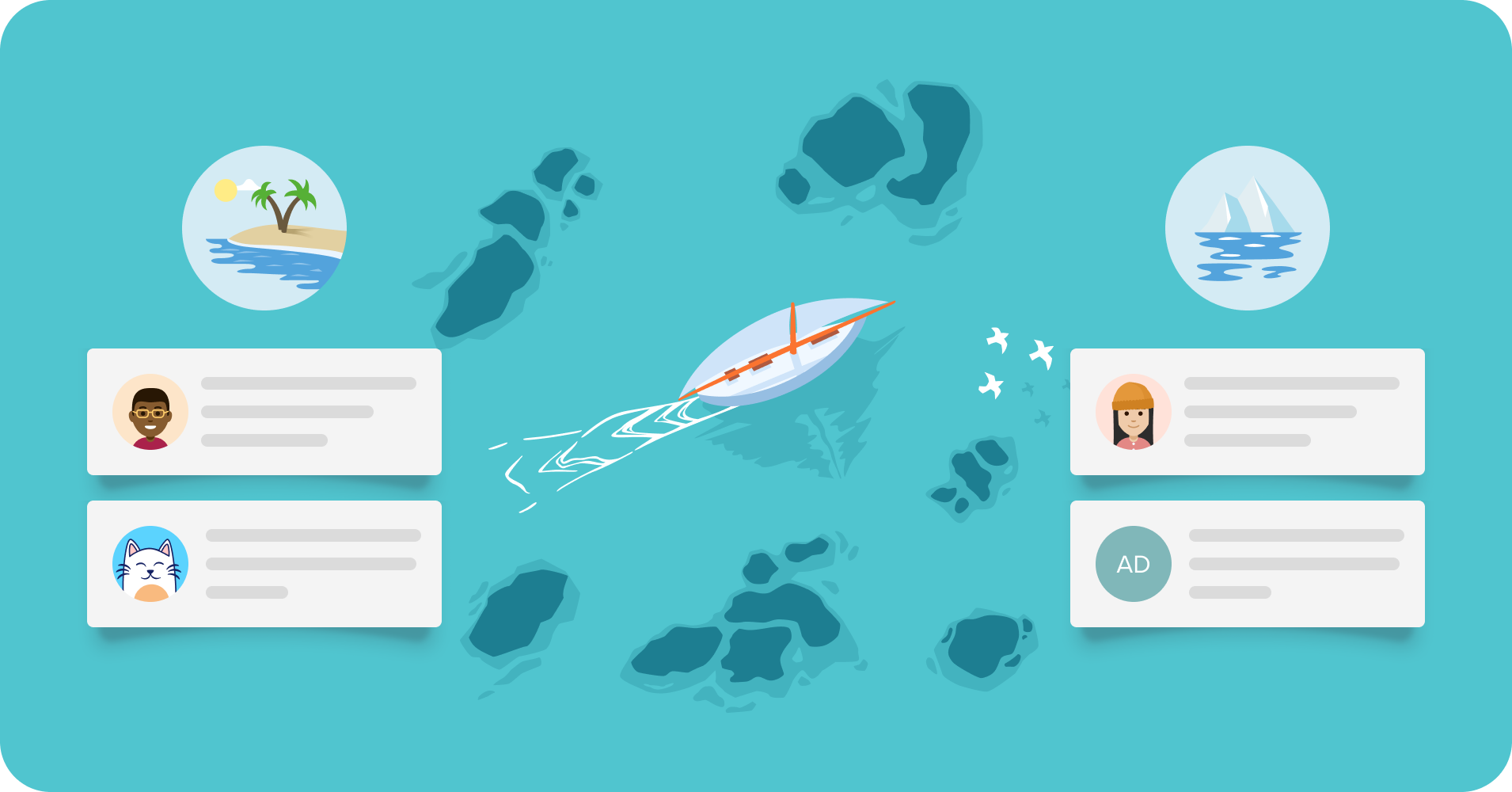The Sailboat Retrospective Template

What is the Sailboat retrospective template?
The Sailboat retrospective is a very popular Agile retrospective technique. This original activity will help the team project itself towards a common objective As for any retrospective session, the expected output is to develop an action plan by taking advantage of the knowledge accumulated during previous Sprints. Connoisseurs know that the Sailboat retrospective template is what we call a Futurespective. 🤓
Picture this! Your Agile team has turned into a sailboat crew, navigating the seas towards a paradise island. The island is your team's goal. The wind represents all the things that will help your boat reach the island. The anchor symbolizes things that can slow down the boat on its way. The iceberg, however, illustrates the dangers that could stop your journey in a very abrupt way.
Thanks to its adventurous imagery, the Sailboat retrospective idea is the perfect exercise to launch a new project or simply run a Sprint retrospective. In addition, this fun retrospective format can be handled by both beginners and experts. So wait no more and hoist the mainsail! ⛵

How does the Sailboat retrospective format work?
An easy way to introduce the Sailboat Retrospective template to your Agile team is to explain that each member is now part of a sailboat crew. You can then break the ice by taking 2 or 3 minutes to collectively choose the name of your sailboat! Once this task is completed, present each of the 4 retrospective questions below.

First, discuss your team’s overall goal. If you're starting a new project or Sprint, this could simply be about the delivery of it.
You can also take this opportunity to talk about secondary objectives such as (non-exhaustive list):
Improve the product quality.
Have a better collaboration with other departments.
How to properly involve stakeholders in our decision-making process.

Based on the objectives defined earlier, what actions can greatly contribute to the success of the team?
Let’s take an example based on what we cover in the previous section: Improve the product quality.
Here are some examples for “The Wind” column:
Work on our test plans to reduce the number of bugs during production deployments.
Review our Code review process and find opportunities for improvement.
Involve designers in the PR review process in order to validate the consistency of our user experience.
Maintain a test environment (‘staging’) up to date and accessible to the entire team.

In an Agile team, we tend to focus on value delivery and want to move quickly (well, very quickly). The anchor will trigger conversations about potential irritants that could harm your team's velocity.
Let’s keep digging into our objective of improving the quality of the product. Here are some examples for the “Anchor” column:
I often wait several days before someone validates my PRs, what a waste of time.
I'm missing requirements and details in my Jira tasks, which slows down my work considerably.
Our test environment is very slow and doesn’t reflect the feature of our expected product

What should the team pay attention to? These could be gaps in team communication, collaboration issues, or even technical challenges. Identifying these risks at the start of the project is a major asset that will help your team better anticipate issues and establish warning mechanisms.
Still looking for ways to improve our product’s quality? Here is a list of examples for the “Iceberg” column:
Our technical debt significantly increases the risk of bugs during deployments.
Test plans are not detailed enough, and do not cover the entire user journey.
Our deadlines are too ambitious, leading to early deployments that can harm user experience.
Optional: The Sun column
You can add the Sun section: what could have a positive impact on the team and make you happy - to the Sailboat retrospective idea. The main thing is to take ownership of this exercise and make it the ultimate Agile retrospective template.
Why is the Sailboat retrospective template so effective?
The Sailboat's greatest strength lies in its metaphor. All team members come together as one (the sailboat crew) to develop the best plan towards a common goal.
By removing the notion of the individual, you’ll probably observe increased ease when it comes to proposing new ideas or even discussing potential risks.
This Agile retrospective idea can also serve as a trigger when the team becomes stuck on complex tasks. Each column is designed to guide the team through a set of specific questions.
Finally, with an imaginative and colorful universe, the Sailboat retrospective model strongly differs from old-fashioned retro exercises.
In a nutshell, the Sailboat activity is the ideal retrospective idea to consider when you want to talk about the future as a team.
Icebreaker question examples for the Sailboat retrospective template
When using the Sailboat Retrospective idea, it is quite easy to prepare a list of specific questions to break the ice at the start of the activity. Here are some questions we like to use at Neatro:
What would be your dream island?
What is the name of your boat? What does this name mean to you?
Do you get seasick?
Hotel or hut at the water’s edge?
You can only bring one kind of food in your suitcases, which one?
Do you prefer volleyball on the beach or relaxing reading in the shade?
If you could choose: sailboat or yacht?
Have you ever gone scuba diving? If not, would you consider trying it?
If you had to build a life raft, how would you proceed?
Who has the secret of fire?
Sunscreen factor 20, 40 or tanning oil?
Do not hesitate to check out our guide to the top 100 “icebreaker” questions or the two truths and a like icebreaker to start your retro in an engaging and stimulating way.




